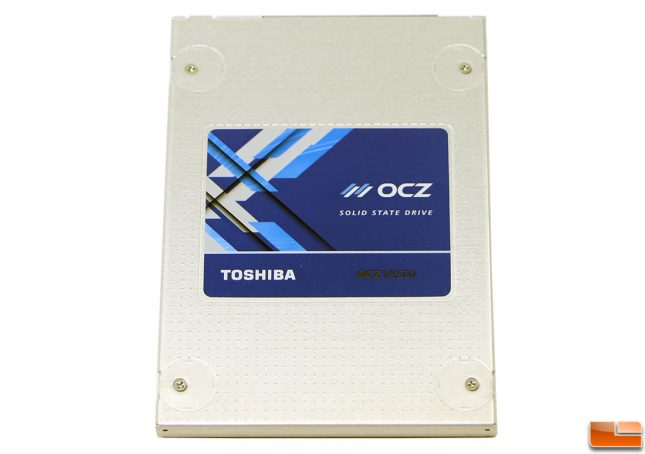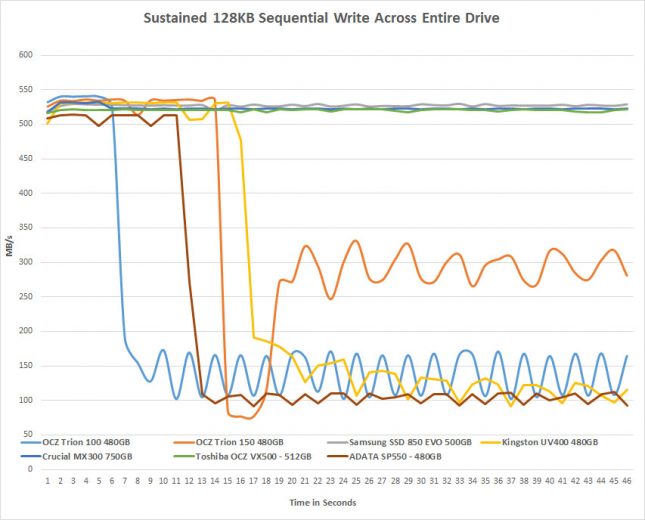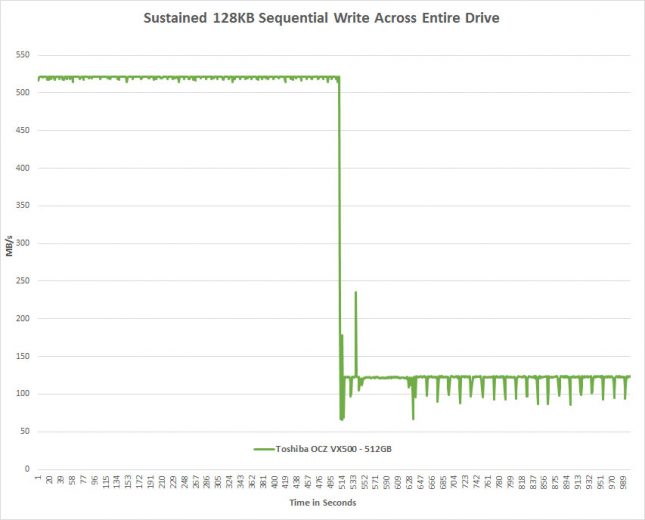Toshiba OCZ VX500 512GB SSD Review
Taking A Look At Sustained Write Performance
Triple-Level Cell TLC NAND based SSDs perform usually quite well, but when you copy a large amount of data to the drive without and idle time you’ll often find a large drop in write speed. TLC NAND is great in applications where write operations are limited , but is usually not recommended for critical systems that have heavy write operations as they have lower endurance ratings than SLC or MLC NAND and of course sustained write performance isn’t stellar. In recent years drive manufactures have been figured out that by using SLC or TLC treated as SLC as a cache they can keep the drives overall write performance high as long as the amount of data being written to the drive fits in the cache. If you overflow the cache, you are then writing directly to the TLC NAND and the write performance will drop down to that level. It should be noted that the SLC cache will clear once the drive idles, so this only impacts long writes that are many GB in size. This might not be a typical workload scenario for this ultra-value or mainstream drives, but still something worth pointing out!
Let’s take a look at some TLC and MLC drives to see how they handle sustained write scenarios.
When you average the test results over the 45 second period that we are focusing on these are the average speeds that you come up with:
- Samsung SSD 850 EVO 500GB – 527.23 MB/s
- Crucial MX300 750GB SSD – 522.4 MB/s
- Toshiba OCZ VX500 512GB SSD – 520.41 MB/s
- Toshiba OCZ Trion 150 480GB – 347.75 MB/s
- Kingston UV400 480GB – 267.04 MB/s
- OCZ Trion 100 480GB – 192.19 MB/s
The Toshiba OCZ VX500 512GB drive does pretty well with sustained writes as it utilizes 2D Planar MLC NAND and doesn’t have a quick performance drop like many of the TLC drives. The difference between the Trion 150 and VX500 is pretty significant!
That doesn’t mean that write performance doesn’t ever take a hit though on the Toshiba OCZ VX500 512GB SSD. At 510 seconds or 8.5 minutes of sustained writes we found that the performance of the drive went from an average of roughly 520 MB/s down to 120 MB/s on average. This means one would have to write just over 265,625 MB (~266GB) of data for to reach this point of lower sustained write performance. This is well over the amount of data a general consumer would write to a drive without any pauses, so the VX500 has pretty solid sustained write performance.
Let’s take a look at some common benchmarks!



